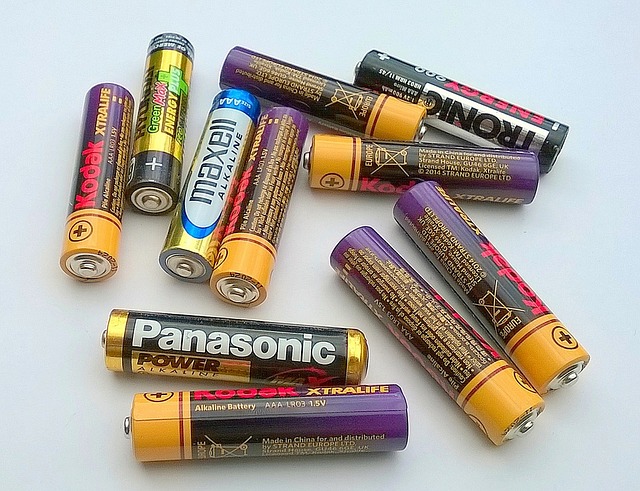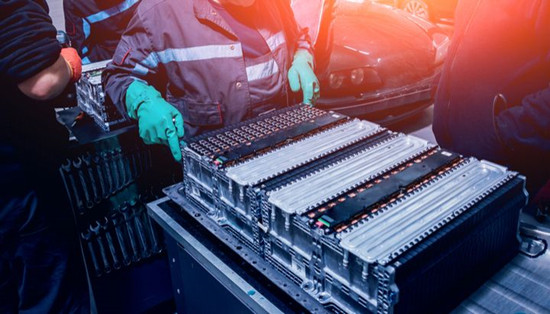Lithium Ion Battery Anode and Cathode Materials
Nov 04, 2019 Pageview:1468
In any given battery, there are two electrodes that are responsible for the chemical reaction that provides energy. The electrode that is responsible for releasing electrons during the battery's discharge is called the cathode. The electrode that is responsible for absorbing those electrons that have been released during the discharge is called the anode. In a battery, the cathode is -always- the negative electrode, while the anode is -always- the positive electrode.
The Anode and the Cathode in the Li-ion battery are where Lithium ions are stored. The electrolyte inside the battery carries the positively charged lithium ions from the cathode to the anode and vice versa during the discharging and charging processes. This movement of the Lithium ions creates free electrons in the cathode, which in return creates a positive charge at the positive current collector. After that, the electrical current flows from the current collector to the negative current collector, operating your device in the process.
What are the materials used for anode and cathode?
The Cathode
The majority of the lithium ion batteries used Graphite as a material. The graphite used in the cathode is either synthetically produced, which is called artificial graphite or mined from the earth, which is called natural graphite. The graphite is then processed before being used on a copper foil, which serves as the cathode in the Li-ion battery.
Lithium is used as ions salts dissolved in the electrolyte of the Li-ion batteries; however, lithium can be used as a material for the cathode itself as well in some batteries.
In the Li-ion batteries, the cathode material must meet some requirements like:
· The material must be of good conductivity and porosity.
· It should be lightweight and durable.
· It must be of low cost to keep batteries cheap.
· The material must match the voltage of the anode of the battery.
The Anode
There is more than one material option that is being used when manufacturing the anode of the Li-ion battery. The material used in the anode of the Li-ion batteries must be of extreme purity with no unwanted metal impurities. The anode in the Li-ion batteries is a mixture of Lithium and other metals. While the cathode material in the Li-ion battery is well optimized, the anode material is open to enhancements, and today's researches are focused on this specific area.
The anode of the Li-ion batteries has active materials. It is composed of Cobalt, Nickel, and Manganese presented in a crystal structure that forms a multi metal oxide material. Lithium is then added to the mixture at the final step.
Why is lithium a good choice for the anode of a battery?
When designing the cathode in the Li-ion battery, the use of high capacity material is a crucial factor in the design aspect. That is why alkali metals are the choice. Moreover, the materials used for the anode of the Li-ion batteries must be of high energy content. Lithium is now the preferred choice to be used as the cathode of the Li-ion batteries. It is the most of the alkali materials that can be easily handled -through with care-. It is the lightest and the most electropositive metal amongst the family of alkali metals. Lithium also has the highest specific capacity value due to its low density.
All the previous made Lithium the perfect choice as a material for the anode. In addition, there are some more advantages to using Lithium as the cathode, which are:
· Lithium is a good reducing agent.
· A higher voltage can be obtained.
· High energy density and electrochemical equivalence high capacity.
· Lithium is a good conducting agent.
· Lithium has superb mechanical stability.
· Lithium is easily manufactured and fabricated.
How to choose better lithium ion battery anode and cathode materials?
The Cathode materials
The most commonly used materials for the anode of the Li-ion batteries are materials based on Carbon and Lithium alloys. To avoid any problems regarding safety, it is recommended to use the minimal potential intercalation electrode. The elements present in this alloy make the inserted lithium less reactive towards the electrolyte. Moreover, the usage of this alloy allows for less Lithium to be used in the battery, which in return makes it safer as less lithium means less reactivity, which translates to fewer fire hazards.
When choosing material for the cathode in the Li-ion batteries, the material must be of good conductivity and porosity that is why graphite is a preferable choice because of its molecular structure that fits this profile. It also must be durable and lightweight. Moreover, the material must match the voltage of the anode inside the same battery.
Cost is a huge factor when choosing the material for the cathode as well. The material should be of low cost that way the manufacturer can ensure that the battery costs less and can be sold on the market easily.
The Anode Materials
The anode in the Li-ion batteries is the most active electrode inside the battery. The anode material depends entirely on the Li-ion battery and its application. The anode does not need to be lithiated as the lithium metal acts as the negative electrode. In Li-ion batteries since the carbon electrode, which acts as the negative electrode, does not have lithium in it, the positive electrode -terminal- must act as the source of lithium. That is why when choosing anode materials, the most common materials are:
· Lithium Manganese spinels (Li-Mn-O)
· Lithium Metal Oxides.
Olivines (LiFePO4)
- Prev Article: LiPo and NiMH Battery Charger
- Next Article: Materials Processing for Lithium Ion Batteries
Leave Message
Hottest Categories
-
Hottest Industry News
-
Latest Industry News













